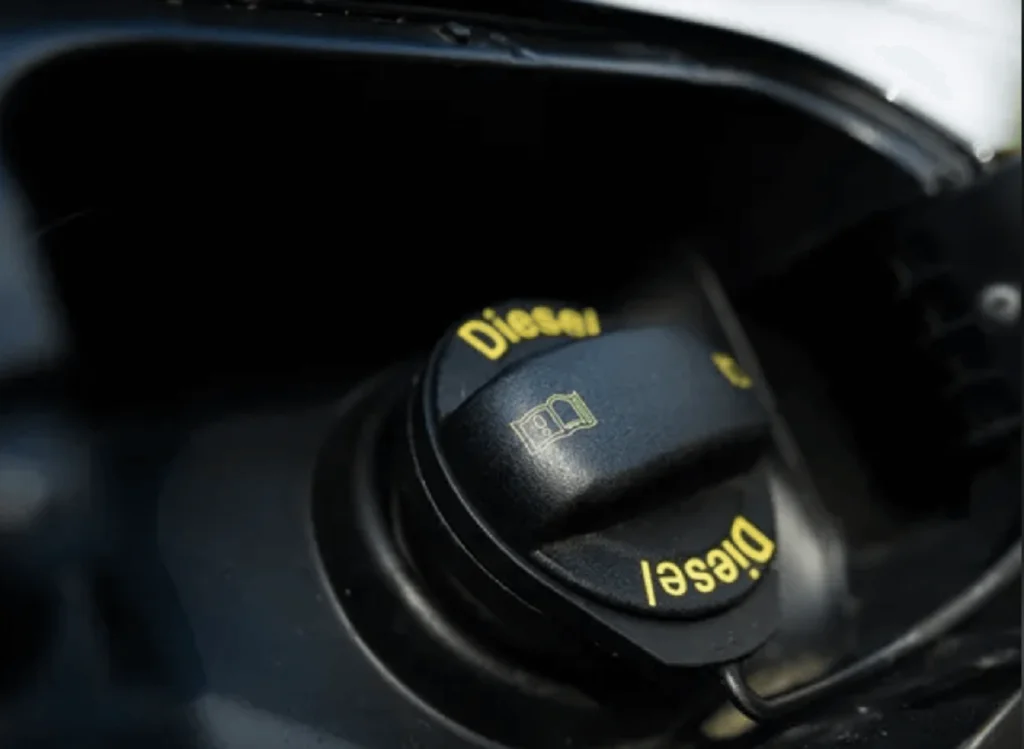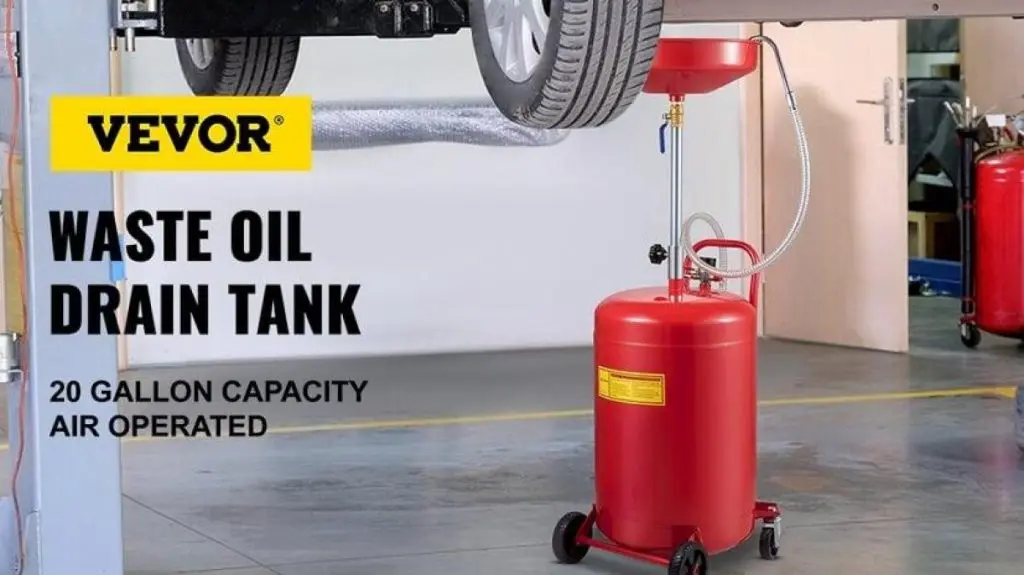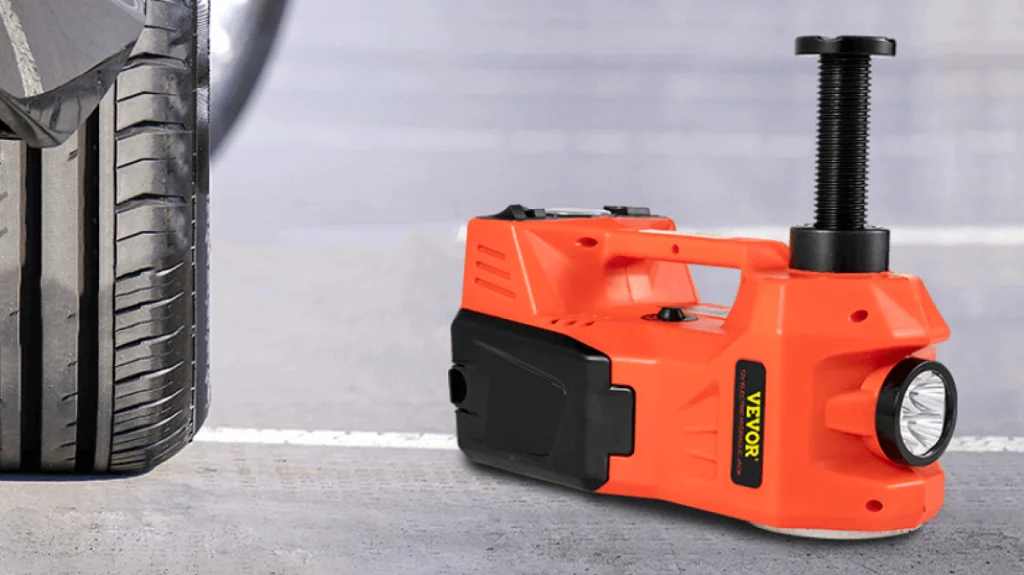Have you ever tried to ignore the fact that your diesel engines need a little TLC? We assure you, you have to brace up and face the mess; usually, the primary fuel filter could be jammed with a solid brown, jelly-like substance with some grit in it. So, to avoid this mess, you must regularly clean your diesel tank to keep it free from residue and dregs.
Regular cleaning of the diesel tank will reassure you that there will be no future risk of engine failure due to fuel problems, however much the vehicle or machinery may operate. It will also ensure the tank is free from messy residue and dregs.
Are you looking for a comprehensive guide on how to clean a diesel fuel tank effectively? This is your answer.
In this article, we’ll discuss the importance of cleaning your fuel tank regularly, including tips on how to prepare for cleaning, how to use a VEVOR Portable Diesel Tank to make cleaning more effective, and additional maintenance guidelines.
Read on to learn more.
Table of contents
Why Cleaning Your Diesel Tank Is Crucial
Most of us have likely experienced the dying clunks of our engines as it grinds to a halt. Well, the most common reason is a blockage in the diesel fuel system, usually caused by residue in the diesel or the most feared diesel-bug clogging the fuel line.
Many reasons can contribute to diesel pump failures. One of the most common culprits, especially, is a dirty fuel tank. It is essential that you remove contaminants and loose debris, including rust and sediments and transfer the fuel to a VEVOR Portable Diesel Tank before a new pump installation. These contaminants can clog the filter, jam the fuel pump, or very much reduce fuel flow due to build-up.
Regularly cleaning your fuel tank is crucial for maintaining the integrity of your vehicle’s fuel system and overall performance. Here is why you should learn how to clean a diesel fuel tank that has been sitting idle for a while:
- Preventing fuel pump failures: contaminants in the diesel tank clog the pump filter, forcing the pump to overwork, potentially leading to burnout and damage to a new pump.
- Optimizing fuel efficiency: A clean tank ensures clean fuel delivery, improving the mileage and overall fuel efficiency.
- Extending diesel fuel system component life: Regular cleaning protects components like filters, injectors, and pumps from premature wear and tear. Thereby, prolonging their lifespan.
- Minimizing engine maintenance costs: Preventing diesel-related issues greatly reduces the risk of costly engine repairs or even replacements.
So, knowing how to clean a diesel fuel tank gives you many benefits, such as;
- Clean tanks provide uncontaminated diesel, boosting mileage and efficiency.
- Regular cleaning saves on component replacements and repairs.
- Clean tanks usually lead to smoother engine operation and reliability.
- Preventing fuel-related problems avoids costly engine repairs.
- Clean tanks will minimize the risks of fuel system failures and related safety hazards.
- Regular checks and inspections by a specialist save cost.
Recognizing Signs of a Dirty Tank
Your diesel engine is a workhorse which will go on for a long time given that the right maintenance has been carried out. Sometimes, that is not the case, and the tank goes bad. We will be sharing some signs that tell you your diesel tank is dirty. Although a complete diagnosis will be needed to make an informed decision about your vehicle or machinery.
- Fuel contamination: Fuel is spoilt from corrosion, debris, and moisture, which can all bring visible contaminants into the tank.
- Clogged strainers/filters: the already mentioned contaminants eventually clog critical components, including the strainers, filters, and the fuel pump itself. This blockage ultimately impairs the flow of fuel, which may affect the vehicle during acceleration, among other long-term impairments.
- Starting problems: When your vehicle or machinery is continually cranking and not starting up, this could be a lot of things but can also be a sign of low compression. Diesel engines rely on compression to start and run, so they must have proper combustion to run smoothly. As your engine ages, the component will wear out and cause serious issues.
- Hesitation during acceleration: The vehicle’s acceleration is slower than normal, or the engine shuts down completely during acceleration. This could mean the fuel pump is struggling to keep up with the increased need for diesel.
- Speed: a clogged fuel pump prevents the proper amount of diesel from getting to the engine, and this ultimately affects the ideal speed.
Preparing For Cleaning
It’s not just enough to know how to clean a diesel fuel tank; you must also know how to prepare for cleaning. Gather the necessary tools and gear you need and make sure you follow all the necessary precautions to avoid hazards.
Here are some safety precautions to take note of when learning how to clean a diesel fuel tank:
- Ensure there’s good ventilation
- Keep sources of ignition far away
- Use protective gloves and safety glasses
To complete the process of cleaning your tank, you’ll need:
- A filter and funnel to remove large particles and contaminants
- Buckets and containers to gather slime and sludge
- Hand pump for drainage and removal of the fuel from the tank
- Brush for scrubbing and cleaning the tank
- Portable diesel tank to store the fuel.
One of the most important steps of cleaning your diesel fuel tank is using a portable diesel tank to store your fuel as you clean. For this, we recommend using the VEVOR Portable Diesel Tank, which is suitable for all weather conditions thereby making sure the diesel is safe without any impurities.
It is also made from highly durable polyethylene material and is designed with a net filter and advanced filter which help to keep contaminants out of the diesel fuel as you clean the tank.
Step By Step Guide To Cleaning Your Diesel Fuel Tank
Learning how to clean a diesel fuel tank is key, especially when you think there might be dirt causing problems for your vehicle or machinery. A clean tank keeps your engine running so smoothly and lasting longer and this can never be overemphasized.
Below are some key steps to consider when cleaning your tank to ensure a clean and efficient system.
Step 1: Draining the tank
Remember that any kind of fuel is flammable. Therefore, you must take some precautionary measures before cleaning the tank. To practice how to clean a diesel fuel tank, start by removing the fuel from the tank, using a pump, and putting it in an approved container. This prevents fuel wastage and allows you to check the fuel for any signs of contamination or debris.
Draining the tank is very important because it ensures that any potential issues with the stored fuel are identified and addressed properly.
Step 2: Detaching connections and accessing the tank
Locate the fuel pump, which is usually inside the fuel pump tank. Detach any connections to any other engine parts before removing it. You should consult the vehicle or machinery manual for more specific instructions on fuel pump removal.
With the pump removed, gently swirl the tank to dislodge any loose debris or sediment. This will definitely make it easier to clean the tanks’ interior effectively.
Step 3: Using the VEVOR Portable Diesel Tank for thorough cleansing
To maintain the fuel quality over time, carefully use a VEVOR portable diesel tank, which will help remove contaminants from the stored fuel. It is important because fuel quality tends to degrade over time, with issues like microbes, water, sediment, and hydrocarbon oxidation causing clogs, engine problems, and reduced efficiency.
A VEVOR portable diesel tank keeps fuel clean and stable in every weather condition while resisting UV radiation, preventing expensive damage, and ensuring reliability in performance in critical machine uses like backup generators and fire pump engines.
Step 4: Flushing and removing debris
Next step in learning how to clean a diesel fuel tank is to use a tank cleaning brush or a long, flexible scrubbing tool to clean the interior of the tank. This will ensure that you remove all the residue, sludge, and dregs from the tank’s walls and bottom. Then, you can add the cleaning solution inside the tank. This solution will help to dissolve any remaining contaminants and sediments.
Drain the swirling solution into another container to allow the tank to dry out completely. This could take at least 30 minutes to prevent moisture from lurking in the tank and contaminating the fuel. If you notice any physical damage, replace it before reusing it to prevent spending on costly repairs or replacements.
Don’t forget to wipe down the exterior of the portable diesel tank with a cloth or paper towel to remove any dirt or residues. This step is crucial in preventing contaminants from entering the tank when we open it. Here’s how the exterior of a clean portable diesel tank should look.
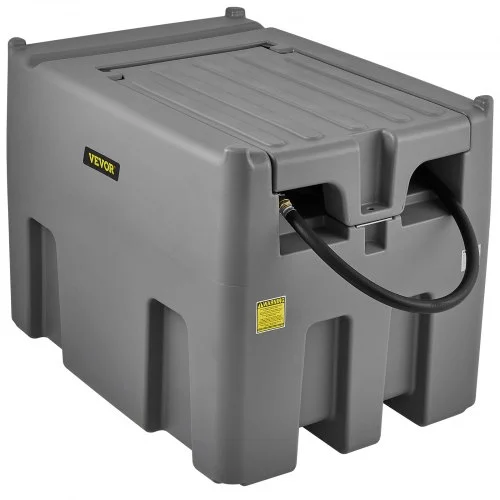
Step 5: Inspecting and reassembling
Now, your diesel tank should be clean and free of any contaminants. However, it is essential that you double check by inspecting both the interior and exterior to check for any dirt you may have missed.
Once you’re sure your diesel tank is clean, wait for it to completely air dry before attempting to reassemble it. This is a crucial step in knowing how to clean a diesel fuel tank because it ensures that no water droplets will be left behind as this will only lead to contamination and cancel out your efforts.
Additional Maintenance Tips to Keep Your Diesel Tank Clean
As you learn how to clean a diesel fuel tank, always keep up with maintenance by looking out for the following:
- Regular visual inspections for damage, leaks, and corrosion.
- Keep the tank exterior clean and clear of debris.
- Install a leak detection system if possible.
- Use high-quality diesel change filters regularly.
- Avoid overfilling the tank. We recommend using the VEVOR Portable Diesel tank as it has an automatic detector and fuel gauge to stop diesel from overflowing while refilling the tank. It is also equipped with a 10 GPM flow rate and 12V electric transfer pump to ease the process of refilling your tank. That way, you can easily empty, refill, and transfer your diesel tank as needed. Here’s an image showing some of these properties.
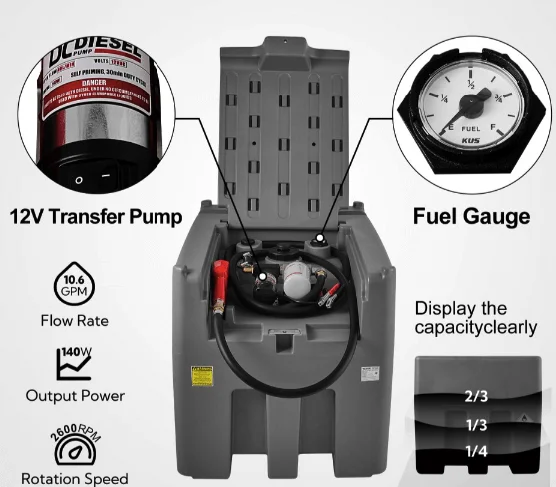
- Ensure proper ventilation to prevent any condensation.
- You should consider corrosion-resistant materials for coatings.
- Always have emergency response plans for spills.
- Comply with regulations and standards.
- Keep records of when the tank was inspected or repaired. And replace the tank if it is beyond repair or at the end of its life.
Remember that neglecting fuel tank treatment can lead to various problems, including contamination, deterioration, and operational disruptions. Therefore, knowing how to clean a diesel fuel tank and treating your diesel tank regularly and correctly is crucial to ensure your vehicle or machinery’s longevity and smooth cooperation.
However, if you are not sure about the right thing to do, take advantage of the portable diesel tank because of the numerous protection it has against impurities such as rust, metals, moisture, and even changing weather. Also, for ease of fuel transfer too.
Common Mistakes to Avoid When Cleaning Diesel Fuel Tank
It is always advisable to take precautionary measures to avoid having to manage problems with diesel tanks. Sometimes, just changing the filters never resolves the problem unless a new diesel tank is being installed. Never underestimate the importance of checking and cleaning your diesel tanks regularly.
Here are some things to avoid doing while learning how to clean a diesel tank.
Preventing Water Contamination
Water in your diesel tank indicates that your tank demands immediate attention. Diesel fuel contaminated with water can lead to costly repairs and vehicle downtime. Water and diesel don’t mix because water settles at the tank’s bottom due to its higher density.
Always remember to do the following while performing maintenance on your diesel tanks:
● Drain the Tank: First, drain the tank thoroughly to remove most of the water. Use a siphoning hose capable of reaching the bottom to ensure complete drainage.
● Use Diesel Fuel Conditioner: Add a trusted diesel fuel conditioner product to your tank, effectively breaking down any remaining water, preventing future problems, and maintaining fuel quality.
● Fill with Fresh Diesel: Complete the process by filling your tank with fresh diesel fuel. Your engine will be back to running smoothly in no time.
A clean fuel tank is very essential for a great engine performance. Accumulated sediments and water in diesel tanks can hamper engine performance and lead to more serious issues like clogged filters, reduced fuel flow, and even pump failure. Diesel tanks tend to accumulate contaminants over time, and ignoring to remove this residue and dregs will often lead to engine failure.
The VEVOR Portable Diesel Tank is perfect for tackling tank deposit issues hands-on. The robust tank can handle changing weather conditions, thereby hindering the accumulation of moisture. It is attached with a fuel gauge aimed at monitoring the diesel capacity, reminding you to fill up in time. This tank is upgraded to offer purer diesel by separating large particles of impurities and filtrating small impurities such as metals, colloids, tiny particles, and more to offer your engine. It is also equipped with forklift pockets for easy lifting and transfer during cleaning.

Conclusion
Diesel engines differ significantly from gasoline or other powered counterparts, so they regularly require unique and very careful maintenance considerations. Known for their durability, efficiency, and power, diesel engines also require regular maintenance to ensure optimal performance and longevity. As such, you must know how to clean a diesel fuel tank for maximum efficiency.
Below are some more best practices for your diesel tank maintenance to have early detection and prevention of breakdowns, reduce repair costs, and ensure the longevity and smooth performance of the engine for years to come.
- Ensure to perform regular oil changes, as neglecting this vital activity can lead to excessive wear and tear.
- Proper fluid levels: Check and be sure not to overfill the tank.
- Maintaining a clean oil filter: Ignoring this task can result in clogs that lead to power loss and affect the engine’s performance.
- Performing regular diagnostic tests: These comprehensive assessments help identify issues preventing long-term damage to the machinery.
VEVOR’s comprehensive range of portable diesel fuel tank cleaners enhances your diesel engine’s performance, maintains fuel system cleanliness, and prevents common issues. By investing in these portable diesel tanks, you are investing in the longevity and efficiency of your diesel engines.

